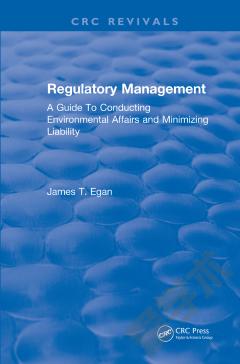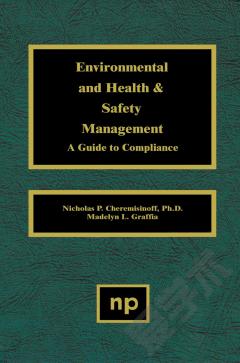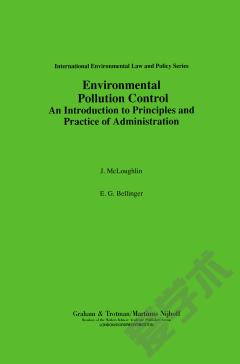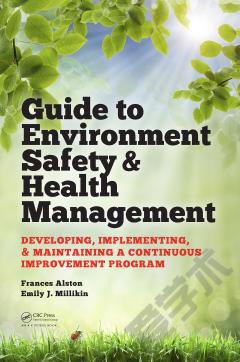Regulatory Management —— A Guide To Conducting Environmental Affairs and Minimizing Liability
----- 规管管理:处理环境事务及尽量减少责任的指引
An important guide to conducting environmental affairs and minimizing liability Public and political concern about the environment has grown at a phenomenal rate over the last several years. Not since the early 1970s has there been such emphasis on reducing pollution. Congress and the Environmental Protection Agency have responded by enacting tough new legislation and increasing enforcement activities. Industry, utilities, and other entities that continue to discharge must invest millions of dollars in advanced waste treatment or face heavy fines or liability. Regulatory Management: A Guide to Conducting Environmental Affairs and Minimizing Liability emphasizes the importance of establishing a proactive approach to permit negotiation and compliance. In 10 detailed chapters, the author explains how to establish cooperative partnerships with politicians and regulators, create solution-oriented strategies using legal and technical permit insights, allocate resources to provide maximum environmental protection at minimum cost, reduce accidents and errors through training programs and procedure documentation, and influence the regulatory process to win practical and achievable permit limits. The book also shows you how to increase public credibility and manage the media, track treatment operations to provide a strong defense in the event of litigation, and keep up with new regulations and new technologies. The book is designed to help its readers set into motion the processes that will develop real solutions to environmental/regulatory challenges and will assist in developing an active and proactive management style that focuses on results as it minimizes liability. Regulatory Management: A Guide to Conducting Environmental Affairs and Minimizing Liability is a "must have" book for anyone responsible for regulatory compliance/management. Private industry, environmental consultants, university officials, environmental engineers, environmental attorneys, and municipal utility managers should consider this book an essential part of their environmental management library.
{{comment.content}}








 京公网安备 11010802027623号
京公网安备 11010802027623号